As the days grow shorter and the temperature drops, it’s time to bid farewell to those lazy swims and embrace the arrival of winter. But before you can fully embrace the coziness of the off-season, there’s a crucial task at hand: winterizing your pool. You may be thinking, “Where do I even begin?” Well, fear not, because this comprehensive guide is here to walk you through each step of the process, ensuring that your pool is properly prepared for the colder months ahead. From cleaning and balancing the water chemistry to removing and storing pool accessories, draining and winterizing the equipment, and finally, covering and securing the pool, this guide has got you covered. So, gather your supplies, and let’s dive into the world of comprehensive winterization – your pool will thank you.
Key Takeaways
- Skimming the surface and cleaning the pool filter are important steps in keeping the pool free of debris.
- Maintaining proper water chemistry, including pH levels and chlorine levels, is essential for a clean and safe pool.
- Inspecting, cleaning, and properly storing pool accessories helps prolong their lifespan.
- Draining and winterizing pool equipment, such as pool pumps and heaters, is necessary to protect them during the off-season.
Step 1: Cleaning the Pool
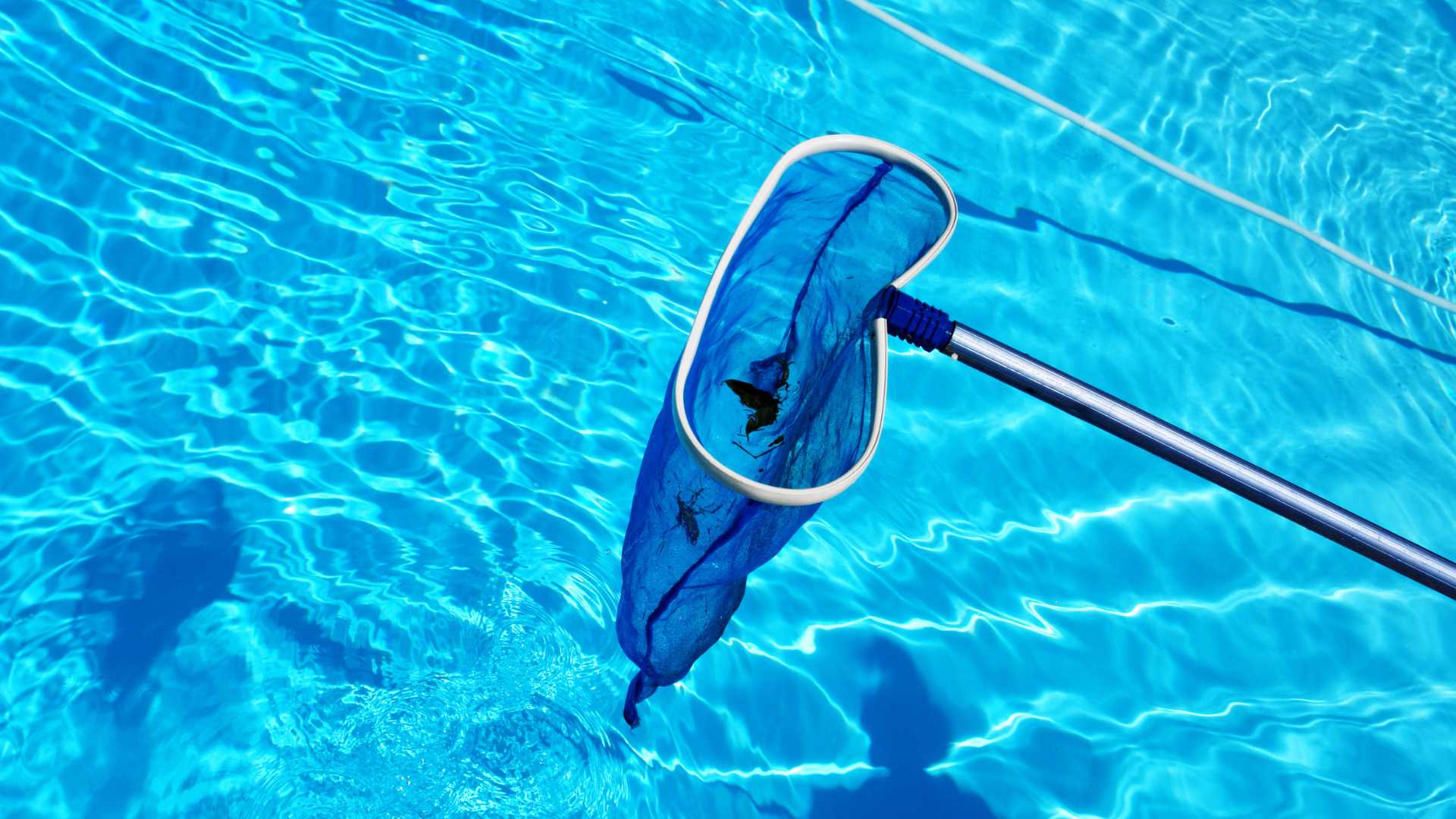
To ensure your pool remains clean and ready for the off-season, follow these detailed steps for proper maintenance. Cleaning your pool is an essential part of pool maintenance to prevent the buildup of dirt, debris, and algae. Start by skimming the surface of the water with a leaf net to remove any leaves, insects, or other floating debris. Next, brush the walls and floor of the pool to dislodge any dirt or algae that may have accumulated. Use a pool vacuum to remove the debris from the water. Pay special attention to the corners and steps of the pool, as these areas tend to collect more dirt. After cleaning, check the pool’s pH and chlorine levels and adjust them accordingly. It is important to regularly clean and empty the pool’s skimmer and pump baskets to ensure proper circulation. Lastly, clean the pool filter by backwashing or rinsing, depending on the type of filter you have. Regular cleaning using these pool cleaning techniques will help maintain a clean and inviting pool throughout the off-season.
Step 2: Balancing the Water Chemistry

Maintaining the proper balance of water chemistry in your pool is crucial for ensuring the safety and comfort of swimmers. By regularly checking and adjusting the pH levels, you can create an environment that is not only inviting but also promotes good health. Here are four important factors to consider when it comes to balancing the water chemistry in your pool:
- pH Level: The pH level of your pool should ideally be between 7.2 and 7.8. This range ensures that the water is neither too acidic nor too alkaline, preventing skin and eye irritation.
- Chemical Adjustments: If the pH level is too high, you can lower it by adding a pH decreaser. On the other hand, if the pH level is too low, you can raise it by using a pH increaser. Regularly testing and making these chemical adjustments will help maintain the optimal pH balance.
- Alkalinity: The total alkalinity of your pool water should be between 80 and 120 parts per million (ppm). This helps to stabilize the pH level and prevent any rapid fluctuations.
- Chlorine Levels: Chlorine is essential for killing bacteria and other contaminants in the pool. The ideal chlorine level should be between 1 and 3 ppm. Regularly testing and adjusting the chlorine levels will ensure a safe and clean swimming experience.
Step 3: Removing and Storing Pool Accessories
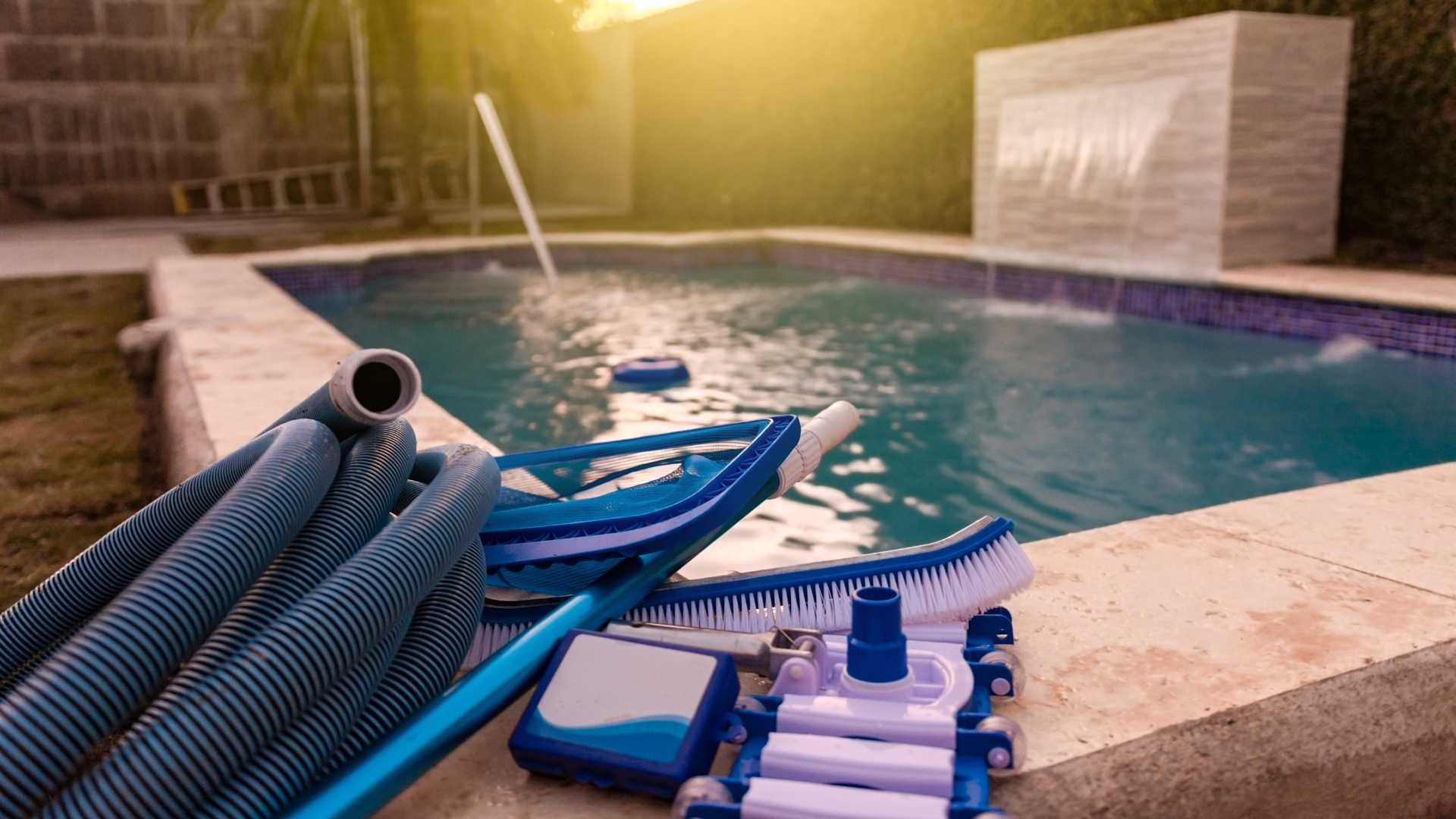
When preparing your pool for the off-season, it’s important to start by removing and properly storing all pool accessories. Taking care of your pool accessories during the winter months is crucial to ensure their longevity and prevent any damage. Here are some steps to follow for pool accessory maintenance and storage options.
Firstly, inspect all pool accessories, such as pool floats, toys, and cleaning equipment, for any signs of wear or damage. Replace any items that are beyond repair to avoid any accidents or issues during the next pool season.
Next, clean all pool accessories thoroughly before storing them. Use mild soap and water to remove any dirt or debris. Rinse them well and let them air dry completely before packing them away. This will prevent the growth of mold or mildew during storage.
When it comes to pool accessory storage options, consider using plastic storage bins or containers with lids. These will protect your accessories from dust, pests, and moisture. Label each container to make it easier to find specific items when you need them again.
To save space, you can also hang certain pool accessories, such as pool brushes or nets, on hooks or racks on your garage or shed wall. This will keep them organized and easily accessible for the next swimming season.
Step4: Draining and Winterizing the Pool Equipment
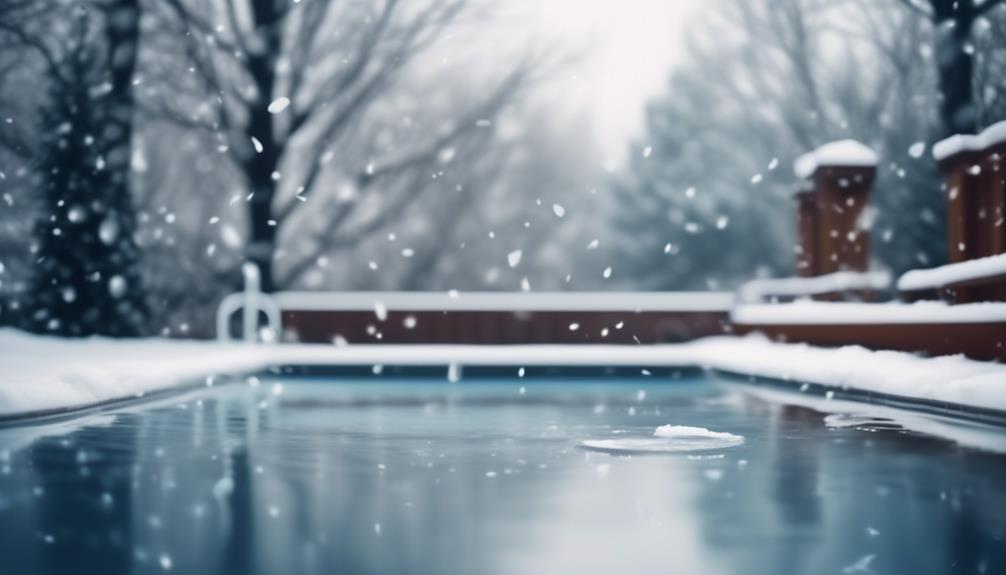
Properly draining and winterizing your pool equipment is an essential step in preparing your pool for the off-season. Neglecting this task can lead to costly repairs and potential damage to your pool system. Here are some important tips to help you with the process:
- Drain the pool: Begin by draining the pool water to the appropriate level recommended by the manufacturer. This prevents freezing and potential damage to the pool walls and equipment.
- Winterize pool filters: Clean and backwash the pool filters before winterizing them. Remove any debris and ensure they are in good working condition. Apply a winterizing chemical to the filters to prevent algae growth during the off-season.
- Empty and store pool pumps: Disconnect the pool pumps and drain any excess water. Clean the pump baskets and remove any debris. Store the pumps in a dry, protected area to prevent damage from freezing temperatures.
- Protect pool heaters: If you have a pool heater, it is important to winterize it properly. Shut off the gas or power supply, drain the water from the heater, and clean any debris. Cover the heater with a waterproof cover to protect it from the elements.
Step 5: Covering and Securing the Pool
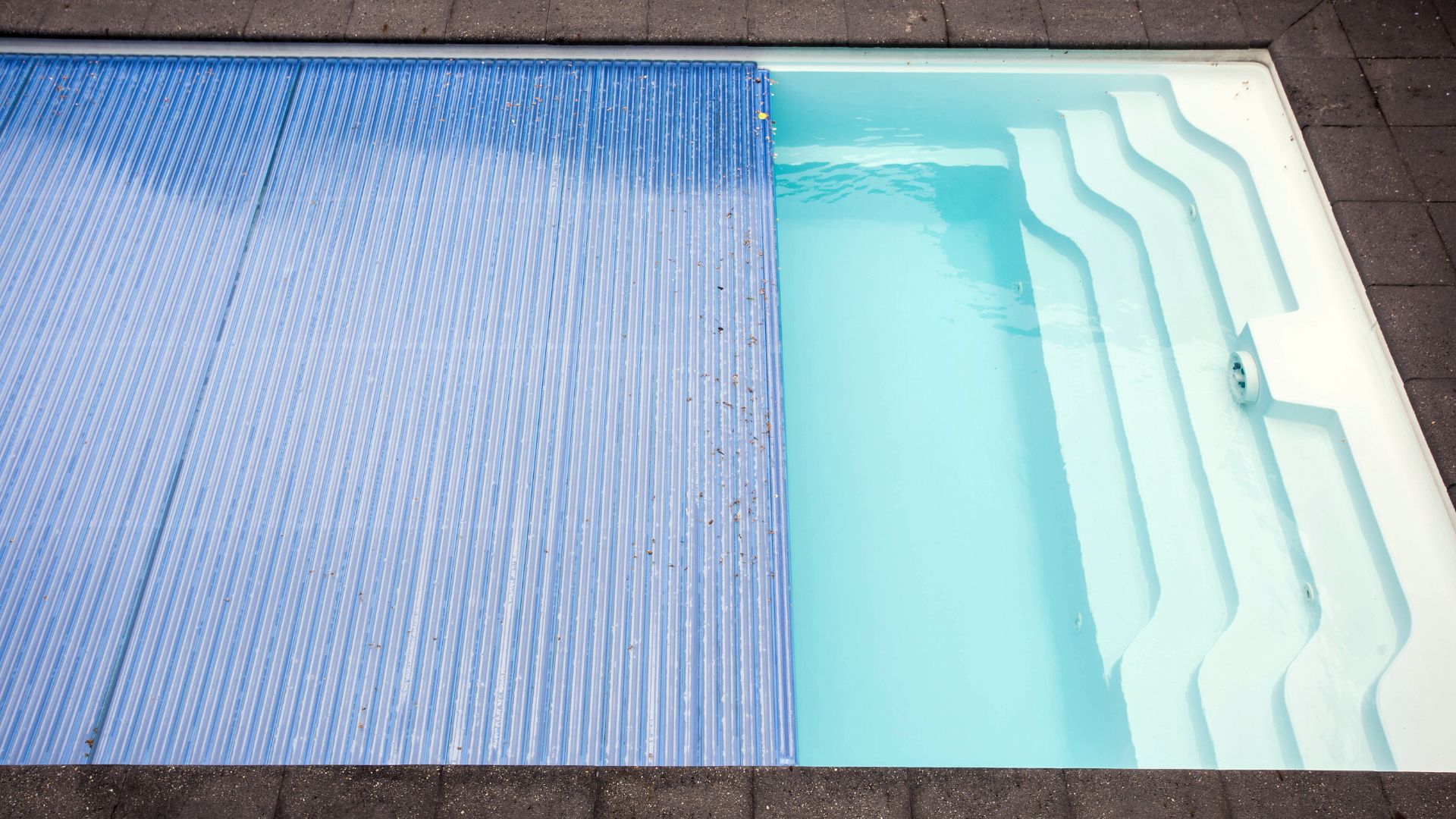
To ensure the safety and cleanliness of your pool during the off-season, it is crucial to properly cover and secure it. Investing in a high-quality pool cover is essential to protect your pool from debris, maintain water quality, and prevent accidents. There are several pool cover options available, each with its own advantages.
Below is a table comparing different pool cover options:
| Pool Cover Type | Description |
| Solid Covers | Made from durable materials, they provide excellent debris protection. They also prevent sunlight from entering the pool, reducing algae growth. |
| Mesh Covers | These covers allow water to pass through while keeping out debris. They are lightweight and easy to install. However, they do not provide as much protection against leaves and fine particles. |
| Safety Covers | Designed to support the weight of a person, these covers offer both debris protection and safety. They are typically made of mesh or solid materials and are secured with anchors. Safety covers are ideal if you have children or pets. |
| Automatic Covers | These covers can be operated with a push of a button. They are convenient and provide excellent safety and debris protection. However, they are usually more expensive than other options. |
| Solar Covers | Solar covers are designed to harness the sun’s energy to heat the pool water. They also act as a barrier against debris. They are lightweight and easy to use, but they are not as durable as other types of covers. |
In addition to choosing the right cover, it is also important to implement pool safety measures. This includes installing a pool alarm or safety fence to prevent unauthorized access. Regularly inspect the cover for any damage and repair or replace it as needed. By taking these steps, you can ensure that your pool remains safe and well-maintained throughout the off-season.
Learn more about how to winterize a pool here.
Frequently Asked Questions
How Often Should I Clean My Pool During the Off-Season?
During the off-season, it’s important to regularly clean your pool to prevent frozen pipes and maintain its condition. Follow best practices for winter pool maintenance to keep it in top shape.
Can I Use Regular Household Cleaning Products to Clean My Pool?
You can use regular household cleaning products for pool maintenance, but there are pros and cons to consider. While they may be convenient and cost-effective, they may not be as effective as specialized pool cleaning products.
What Should I Do if I Notice Algae Growth in My Pool During the Off-Season?
If you notice algae growth in your pool during the off-season, it’s important to take immediate action. Start by treating the algae using appropriate products and follow preventive measures to stop further growth.
Is It Necessary to Remove and Store Pool Accessories Like Ladders and Diving Boards During Winterization?
Yes, it is necessary to remove and store pool accessories like ladders and diving boards during winterization. This helps protect them from damage and extends their lifespan. Make sure to clean and dry them before storage.
Should I Cover My Pool With a Tarp or a Specific Pool Cover During the Off-Season?
You should cover your pool with a specific pool cover during the off-season. It offers better protection against debris, UV rays, and helps to maintain water temperature, preventing damage and reducing maintenance. A tarp may not provide the same benefits.


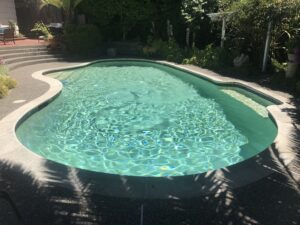



 Alex Cota
Alex Cota  Sophie Pekic
Sophie Pekic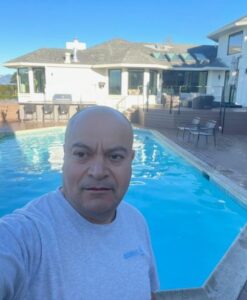 Rudy Reyes
Rudy Reyes  Mark Harlan
Mark Harlan Kevin Hall
Kevin Hall 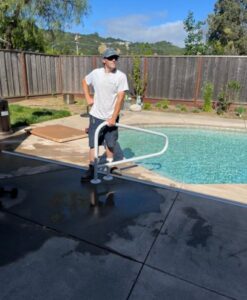 Howard (Howie) Van Lare
Howard (Howie) Van Lare  Chris Cavalerro
Chris Cavalerro 

 Betty Garmendina
Betty Garmendina George Wallace
George Wallace Zach Zastrow
Zach Zastrow Jorge Salazar Bernal
Jorge Salazar Bernal Mike Watson
Mike Watson Jane Ciuchta – Hired 2015
Jane Ciuchta – Hired 2015 Bruce Muir – Hired 2020
Bruce Muir – Hired 2020 David-Metzger – Hired 2014
David-Metzger – Hired 2014 Robin Clarke – Hired 2019
Robin Clarke – Hired 2019 Maddi Davidson – Hired 2022
Maddi Davidson – Hired 2022 John Albachten – Hired 2015
John Albachten – Hired 2015 Jay Bergmann – Hired 2023
Jay Bergmann – Hired 2023 Summer Venegas – Hired 2017
Summer Venegas – Hired 2017 Rebecca Jones – Hired 2015
Rebecca Jones – Hired 2015 Jane Doe – Hired 2014
Jane Doe – Hired 2014